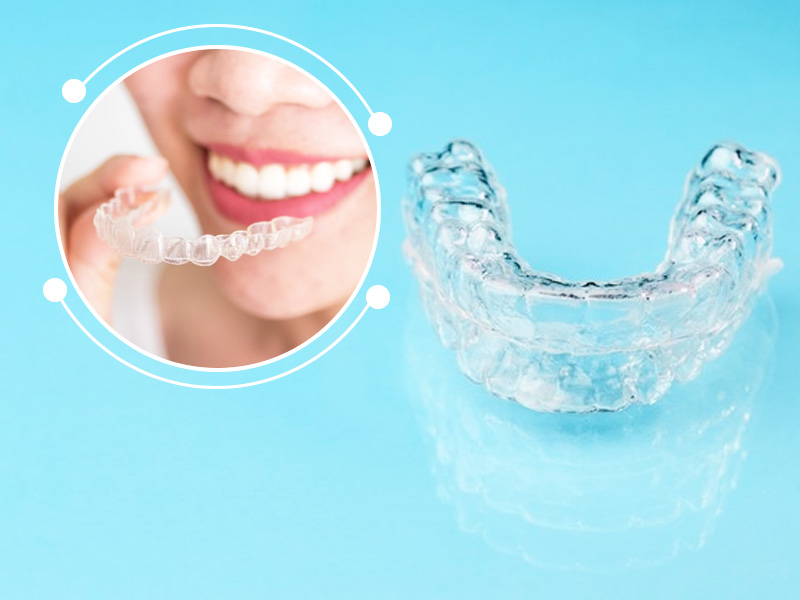
Braces are one of the most evident orthodontic options for those with crooked or crowded teeth. However, others who want their teeth straightened while avoiding braces can opt for a revolutionary alternative in the form of invisible aligners. Invisible aligners are transparent hard plastic aligners that are custom-made to fit the mouth. During the first few months, they must be examined and checked as they attempt to align the teeth into the desired position. If you are planning to get invisible aligners done, you must read these pros and cons told by Dr. Namrata Rupani, Founder & CEO Capture Life Dental Care.
Table of Content:-
What are invisible aligners or clear aligners?
Clear aligners have risen in popularity as a method of straightening or realigning your teeth over the last few decades. Although invisible aligners are not fully invisible, these clear covers fit securely over the teeth and are significantly less obvious than regular braces' brackets and wires. Invisible aligners can be worn for several reasons, including crowding and spacing difficulties, as well as mild to moderate biting concerns.
For these invisible aligners to operate properly, they must be worn for 20 to 22 hours each day. The only time they can be removed is during eating or drinking, brushing or flossing the teeth. Regular cleaning can be done with mild water and never very hot water as hot water can warp the plastic and alter the fitting, thereby affecting the effectiveness of the aligners. However, like with everything, there are advantages and disadvantages of opting for invisible aligners.

Pros of Invisible Aligner
- These are removable at will and has simpler maintenance. Daily dental hygiene is easier as these aligners can be removed while brushing and flossing; unlike wires and braces that need to be worked around them
- With zero fixing parts and attachments, invisible aligners don’t have any wire issues or brackets that could fall off or cut into the tongue.
- Clear aligners from Invisalign can straighten your teeth in half the time of conventional braces. Traditional braces with brackets and wires often need 12 to 24 months of therapy. Clear aligners can straighten your teeth in six to twelve months.
- Invisible aligners are virtually transparent and are comparatively far less apparent than brace wires and brackets. These aligners are invisible in appearance and they seldom attract attention. Moreover, they provide the wearer complete freedom to smile and communicate without being conscious.
- Clear aligners are not fastened to your teeth like traditional braces, but rather are slipped over the teeth and worn for at least 22 hours every day. It is more pleasant than regular braces and may be removed when eating and drinking. Clear aligners do not pose the danger of cutting from metal wires and brackets since the material is smooth and somewhat flexible.
- Traditional aligners use a set of aligners to gradually shift your teeth into their proper locations. Each tray of aligners is worn for around two weeks. After two weeks, you'll move on to the next tray in the series. As a result, you will need to see your dentist less frequently, generally once every six to eight weeks.

Also Read: Planning to Get Teeth Aligners? Do Not Fall For These Myths, Read Facts
Cons of Invisible aligners
- These aligners are less effective in cases of complicated procedures and those that require bridgework on several teeth arrays.
- While flexible, these aligners need to be worn for 20 to 22 hours every day. This requires a high level of discipline to get the maximum benefits from wearing these aligners.
- Unlike wire braces, these aligners need to be removed before eating or drinking as bacteria may develop around the teeth or gum line and can lead to cavities. Additionally, fluids and certain food colours can discolour the aligners as well as your teeth.

- Invisible aligners may not be the best option for crowded teeth that are due to a tiny jaw, or if the overbite or underbite is the result of a misaligned jaw.
- An orthodontist may require to place buttons to assist the clear aligners to stay in place. These buttons can be irritating when the aligners are removed for eating and drinking and otherwise.
- While being flexible and removable, these aligners need to be washed every time there are worn after brushing the teeth, flossing, and rinsing with mouthwash. Washing the aligners is a must after every meal and drinking any fluid that isn't water.
- The risk of developing cavities is higher if the plaque and food particles are not removed before wearing these aligners.
Also Read: Braces Care Guide: 5 Tips To Take Care Of Your Metal Braces
Invisible aligners are an excellent tool for achieving appropriate tooth alignment and can correct almost all forms of tooth misalignment issues that could range from crowding and spacing concerns to mild and moderate biting issues. Underbite, overbite, crossbite, crowding of the teeth, gap between the teeth, and other teeth misalignment problems are some of the most frequent teeth misalignment problems repaired by clear aligners treatments. Aside from the difficulties mentioned above, invisible aligners can assist to improve the quality of the smile and bring the necessary confidence for everyday wear.
Image credits- freepik
Also watch this video
How we keep this article up to date:
We work with experts and keep a close eye on the latest in health and wellness. Whenever there is a new research or helpful information, we update our articles with accurate and useful advice.
Current Version